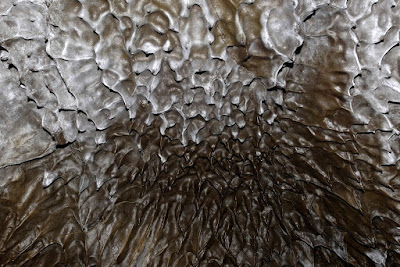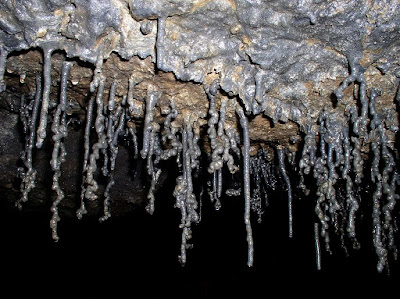The geology of lavacicle caves
 |
|
Lava stalactites
|
The generic term “lavacicle” has been applied to lava stalactites and stalagmites indiscriminately, and evolved from the word “icicle”.
Lavacicle is formed in lava tubes while lava is still active inside. The mechanism of formation is similar to that of limestone stalagmites.
Essentially, it is still the deposition of material on the floors of caves; however with lava stalagmites, formation happens very quickly in only a matter of hours, days, or weeks, whereas limestone stalagmites may take up to thousands of years.
Stalagmites in lava tubes are rarer than their stalactite counterparts because during formation the dripping material falls onto still-moving lava floors that absorb or carry the material away.
In other words lavacicle is geological formation consisting of a quantity of lava that dripped from the roof of a cave as it cooled and hardened, leaving a rounded protrusion.
 |
| Shark tooth stalactites in Gj?bakkahellir, Iceland. credit: ? Wolfgang P?lzer |
 |
| lava stalagmites Vi?gelmir cave in Hallmundarhraun lava field, Iceland via: photosfromiceland.com |
